0-8247-2399-6
Table of contents :
dk3162fm……Page 1
Rotordynamics……Page 7
Dedication……Page 9
Foreword — Bently……Page 10
Foreword — Jones……Page 11
Preface……Page 13
The Author……Page 21
Acknowledgment……Page 24
Contents……Page 25
APPENDIX 10: Fluid Circumferential Average Velocity Ratio as a Journal Eccentricity Function Based on Lubrication Theory……Page 0
1.1 INTRODUCTION……Page 40
1.2 MATHEMATICAL MODEL OF TWO LATERAL MODE ISOTROPIC ROTOR……Page 47
1.3 EIGENVALUE PROBLEM — ROTOR FREE RESPONSE — NATURAL FREQUENCIES……Page 52
1.4 ROTOR STATIC DISPLACEMENT……Page 53
1.5.1 Forced Response to Forward Circular Nonsynchronous Excitation……Page 54
1.5.2.1 Low Excitation Frequency,………Page 56
1.5.2.2 Response at Direct Resonance,…. Case of Low Damping,………Page 57
1.5.2.3 Response at High Excitation Frequency,………Page 59
1.5.2.5 Rotor Nonsynchronous Amplification Factor……Page 60
1.6 UNIDIRECTIONAL HARMONIC, NONSYNCHRONOUS EXCITATION……Page 61
1.7.1 Rotor Response to Unbalance Force……Page 62
1.7.2 Differential Technique……Page 64
1.8 COMPLEX DYNAMIC STIFFNESS AS A FUNCTION OF NONSYNCHRONOUS PERTURBATION FREQUENCY: IDENTIFICATION OF THE SYSTEM PARAMETERS. NONSYNCHRONOUS AND SYNCHRONOUS PERTURBATION……Page 65
1.9 CLOSING REMARKS……Page 67
REFERENCES……Page 68
2.1 TRENDS IN MACHINERY MANAGEMENT PROGRAMS……Page 69
2.2 TRENDS IN VIBRATION MONITORING INSTRUMENTATION……Page 72
2.3 TREND IN THE KNOWLEDGE ON ROTATING MACHINE DYNAMICS……Page 75
2.4.1.1 Accelerometers……Page 77
2.4.1.3 Applicability of Accelerometers and Velocity Transducers on Rotating Machinery……Page 78
2.4.1.4 Displacement Transducer……Page 79
2.4.1.6 Keyphasor® Transducer……Page 82
2.4.2 Transducer Selection……Page 85
2.4.3 Machine Operating Modes for Data Acquisition and Data Processing Formats……Page 86
2.4.4 Modal Transducers — Virtual Rotation of Transducers — Measurement of Rotor Torsional Vibrations……Page 94
2.4.5 Application of Full Spectrum and Complex Variable Filtering in Rotor Health Diagnostics……Page 100
2.4.6 Measurement and Documentation Conventions……Page 107
2.4.8 Instruments for Data Processing and Displaying in Real Time……Page 109
2.4.8.2 Monitors……Page 110
2.4.8.4 FFT Spectrum Analyzer……Page 111
2.4.10 Incorporation of Machine Modeling into Data Processing Systems……Page 112
REFERENCES……Page 114
3.2.1 Introduction……Page 116
3.2.2 Lateral Modes of a Two-Disk Isotropic Rotor……Page 118
3.2.3 Modes of a Flexible Rotor in Flexible Supports……Page 125
3.2.5 Modes of a Multi-Rotor Machine: Example — A Turbogenerator Set……Page 126
3.3.1 Introduction: Role of External and Internal Damping in Rotors……Page 127
Model of the Rotor with Internal Friction……Page 129
3.3.3.1 Rotor Free Response, Natural Frequencies, Instability Threshold……Page 132
3.3.3.2 Rotor Static Displacement……Page 135
3.3.3.2.1 Experimental demonstration of the attitude angle……Page 136
3.3.3.3 Rotor Nonsynchronous Vibration Response: Forced Response for Forward Circular Excitation……Page 137
3.3.3.4 CDS Diagram……Page 139
3.3.4 Isotropic Rotor Model with Nonlinear Hysteretic Internal Friction……Page 144
3.3.5 Rotor Effective Damping Reduction Due to Internal Friction……Page 146
3.3.6 Internal Friction Experiment……Page 147
3.3.7 Instability of an Electric Machine Rotor Caused by Electromagnetic Field Rotation……Page 150
3.3.8 Summary……Page 152
3.4.1 Rotor Model and Rotor Forced Response to External Nonsynchronous Rotating Force Excitation……Page 154
3.4.2 Constant Amplitude Rotating Force Excitation……Page 158
3.4.3 Rotating Force Excitation with Frequency-Dependent Amplitude……Page 160
3.5.1 Anisotropic Rotor Model……Page 161
3.5.2 Eigenvalue Problem: Rotor Natural Frequencies and Stability Conditions……Page 162
3.5.3 Rotor Response to a Constant Radial Force……Page 166
3.5.4.1 A General Case of Nonsynchronous Frequency Excitation……Page 171
3.5.4.2 Excitation by Rotor Unbalance Force……Page 172
3.6.1 Rotor Model Derivation……Page 177
3.6.2 Eigenvalue Problem and Resonance Speeds in Case without Damping……Page 180
3.6.3 Rotor Response to Unbalance……Page 181
3.7.1 Rotor Model Derivation……Page 184
3.7.2 Eigenvalue Problem, Rotor Free Vibrations, and Stability Conditions……Page 185
3.7.3 Rotor Response to Skewed Disk Unbalance-Related Excitation……Page 186
3.8.1 Rotor Model……Page 188
3.8.2 Eigenvalue Problem and Rotor Free Vibrations……Page 189
3.8.3 Rotor Response to Constant Unidirectional Force……Page 191
3.9.1 Rotor Model……Page 192
3.9.2 Eigenvalue Problem: Natural Frequencies and Stability Conditions……Page 193
3.9.3 Rotor Response to Unbalance……Page 196
3.10.1 Introduction: Role of Damping in the Torsional Mode……Page 197
3.10.2 Model of Pure Torsional Vibrations of Rotors……Page 198
3.10.3 Model of Pure Torsional Vibrations of a Two-Disk Rotor and its Solution……Page 201
3.10.4.1 Rotor Model……Page 203
3.10.4.2 Eigenvalue Problem: Natural Frequencies and Stability Conditions……Page 206
3.10.4.4 Rotor Forced Response to Gravity Force……Page 208
3.10.4.5 Rotor Forced Response to a Variable Torque……Page 210
3.10.5 Torsional/Lateral Cross Coupling due to Rotor Anisotropy: Experimental Results……Page 212
3.10.5.2 Experimental Results……Page 213
3.10.5.3 Discussion……Page 217
3.10.6 Summary and Conclusions……Page 218
3.11.1 Introduction……Page 221
3.11.2.1 Rotor Nonlinear Model……Page 222
3.11.2.2 Harmonic Balance Solution for the Rotor Forced Response……Page 223
3.11.2.3 Approximate Solution……Page 226
3.11.3.1 Introduction……Page 228
3.11.3.2 Description of the Rotor Rig……Page 229
3.11.3.4 Rotor Lateral Response Data During Start-up with Concentric Journal……Page 230
3.11.3.5 Rotor Lateral Response Data During Start-up with Side-loaded Journal……Page 232
3.11.3.6 Discussion……Page 239
3.11.4 Closing Remarks……Page 240
INDICES……Page 241
REFERENCES……Page 242
4.1.1 Some Personal Remarks……Page 245
4.1.2 What this Chapter Presents……Page 246
4.2.1 Description of the Start-up Vibration Behavior of a Rotor/Bearing System……Page 250
4.2.2 Fluid-Related Natural Frequency of the Rotor/Fluid System……Page 258
4.2.4 Fluid Whirl and Fluid Whip in Seals and in Fluid-Handling Machines……Page 262
4.3.1 Fluid Force Model……Page 263
4.3.2.1 Impulse Testing: Fluid Circumferential Average Velocity Ratio as a Decreasing Function of Journal Eccentricity……Page 271
4.3.2.2 Fluid Starvation Lowers the Fluid Circumferential Average Velocity Ratio Value……Page 272
4.3.2.3 Conclusions from Experiments……Page 278
4.3.3 Summary……Page 282
4.4.2 Rotor Model……Page 283
4.4.3 Eigenvalue Problem: Rotor Free Response. Natural Frequencies and Instability Threshold……Page 285
4.4.4 Rotor Response to a Constant Radial Force……Page 289
4.4.5.1 Forced Response of the Rotor to Forward Circular Excitation Force……Page 292
4.4.5.2 Complex Dynamic Stiffness Diagram Based on Eqs. (4.4.23)……Page 294
4.4.5.2.2 Response at direct resonance, …. Case of low damping, …1……Page 296
4.4.5.3 A Particular Case: Both Direct and Quadrature Dynamic Stiffnesses Nullified……Page 300
4.4.5.4 Rotor Response to a Backward (Reverse) Rotating Exciting Force……Page 301
4.4.5.5 Rotor Response to a Unidirectional Harmonic Nonsynchronous Excitation……Page 303
4.4.6.1 Dynamic Stiffness Vector……Page 306
4.4.6.2 Stability Margin……Page 308
4.4.6.3 Nonsynchronous Amplification Factors……Page 309
4.4.8 Rotor Model Extensions……Page 311
4.5.1 Rotor Model……Page 312
4.5.2 Linear Model Eigenvalue Problem: Natural Frequency and Threshold of Instability……Page 313
4.5.3 Role of Fluid Circumferential Average Velocity Ratio and Fluid Film Radial Stiffness in the Instability Threshold……Page 314
4.5.4 Self-Excited Vibrations — Fluid Whip……Page 315
4.5.5 Static Equilibrium Position……Page 317
4.5.6 Equation in Variations Around the Static Equilibrium Position……Page 320
4.5.7 Linearized Equation in Variations and the Threshold of Stability for Eccentric Rotor: Anisotropic Fluid Force……Page 322
4.5.9 Equation in Variations — a Formal Derivation……Page 324
4.5.10 Effects of Fluid Inertia and Damping Nonlinearity……Page 327
4.5.11 Experimental Results — Anti-Swirl Technique……Page 328
4.5.12 Influence of Fluid Circumferential Flow on the Rotor Synchronous Response……Page 330
4.5.13 Proof of the Lyapunov’s Stability of Self-Excited Vibrations……Page 333
4.5.14 Experimental Evidence of a Decrease of Fluid Circumferential Average Velocity Ratio With Rotor Eccentricity……Page 335
4.5.15.1 Introduction……Page 337
4.5.15.2.2 Eigenvalue problem: natural frequencies and instability threshold……Page 339
4.5.15.2.3 Rotor self-excited vibrations……Page 340
4.5.15.3 Transient Process Starting at the Instability Threshold……Page 341
4.5.15.4 Transient Process Around the Limit Cycle……Page 343
4.5.16 Summary……Page 344
4.6.1 Rotor Model……Page 346
4.6.2 Eigenvalue Problem of the Linear Model (4.6.1), (4.6.2): Natural Frequency and Threshold of Instability……Page 347
4.6.4 Rotor Self-Excited Vibrations: Fluid Whirl and Fluid Whip……Page 350
4.6.5 Synchronous Solution — Rotor Forced Vibrations Due to Unbalance (1×)……Page 356
4.6.6 Stability of Synchronous Vibrations……Page 357
4.6.9 Experimental Evidence of an Increase of the Threshold of Instability with Increasing Oil Pressure in the Bearing……Page 362
4.6.10 Summary……Page 364
4.7.1 Rotor/Seal and Rotor/Bearing Mathematical Model……Page 366
4.7.2 Eigenvalue Problem……Page 367
4.7.3 Post-Instability Threshold Self-Excited Vibrations……Page 370
4.7.4 Identification of Instability Source Along the Rotor……Page 371
4.8.1 Introduction……Page 372
4.8.2 Comparison of Two Frequency-Swept Rotating Input Perturbation Techniques Used for Identification of Fluid Forces in Rotating Machines……Page 375
4.8.3 Perturbation Testing of Low-Mass, Rigid Rotor/Bearing System by Applying Force at the Input: Identification of Fluid Dynamic Forces……Page 380
4.8.4 Rotor/Fluid System Stability Margin……Page 388
4.8.5 Perturbation Testing of a Flexible Two-Complex Mode Rotor: Identification of Rotor/Bearing System Parameters……Page 391
4.8.6.2 Experimental Test Rig……Page 398
4.8.6.3 Constant Force Amplitude Perturbator……Page 399
4.8.6.4 Water Delivery System……Page 400
4.8.6.5 Mathematical Model……Page 401
4.8.6.6 Experimental Test Results……Page 402
4.8.6.7 Conclusions……Page 405
4.8.7.2 System Model and Anisotropy Algorithm……Page 408
4.8.7.3 Experimental Test Rig and Test Results……Page 410
4.8.7.4 Discussion and Conclusions……Page 422
4.8.8.2 Parameters of Experimental Rig……Page 423
4.9.8.3 Stability of Rotor with a Soft Casing……Page 429
4.8.9.1 Introduction……Page 432
4.8.9.2 Experimental Setup……Page 433
4.8.9.3 Mathematical Model……Page 434
4.8.9.3.1 Eigenvalue problem: natural frequencies and stability condition……Page 435
4.8.9.4 Perturbation Procedure and Identification of Rotor Parameters……Page 439
4.8.9.5 Summary……Page 444
4.8.10 Identification of Fluid Force Nonlinear Functions……Page 445
4.8.11 Historical Outlook on Applications of Rotor Perturbation Systems……Page 448
4.8.12 Other Results on Identification of the Fluid Force Models in Rotor/Bearing/Seal Systems and Fluid-Handling Machines……Page 452
4.8.13 Summary of Results of Numerical and Analytical Studies on Fluid Dynamic Forces in Seals and Bearings……Page 455
4.8.14 Closing Remarks……Page 458
4.9.1 Introduction……Page 459
4.9.2 Model of the Rotor……Page 461
4.9.3 Eigenvalue Problem: Natural Frequencies and Instability Thresholds……Page 462
4.9.4 Sensitivity of Instability Thresholds to System Parameters……Page 466
4.9.5 Reduced Models……Page 469
4.9.6 Fluid Whirl and Fluid Whip — Self-Excited Vibrations……Page 470
4.9.7.1 Rotor Model……Page 472
4.9.7.2 Eigenvalue Problem: Natural Frequencies, Thresholds of Instability, and Modes……Page 473
4.9.7.3 Symmetric Case……Page 477
4.9.7.4 Self-Excited Vibrations……Page 479
4.9.7.5 Radial Constant Force Effect……Page 480
4.9.8 Experimental Results: Simultaneous Fluid Whip of the First and Second Mode: Stabilizing Effect of Constant Radial Force……Page 481
4.9.9 Closing Remarks……Page 486
4.10.1 Introduction……Page 489
4.10.2 Rotor Model……Page 490
4.10.2.1 Assumptions……Page 491
4.10.3 Stability of the Mirror Symmetric System — Uncoupled Modes……Page 492
4.10.4.2 Coefficient of Stiffness Asymmetry, b…….Page 496
4.10.5 Conclusions……Page 502
4.11.1 Introduction……Page 503
4.11.2 Bearing and Seal Coefficients……Page 504
4.11.3 Fluid Force Model for Anisotropic Bearings……Page 507
4.11.4 Rigid Rotor Stability Analysis……Page 509
4.11.4.2 Fluid Inertia Neglected (Mf = 0)……Page 511
4.11.5 Characteristic Parameters and Stability Analysis Based on Existing Bearing Coefficient Data……Page 512
4.11.6 Summary of Results……Page 525
4.11.7 Method of Rotor Elliptic Orbit Construction……Page 526
4.11.8 Anisotropic Fluid Film Force in a Bearing……Page 527
4.11.9 Transformations Between Parameters of the Anisotropic B/M Model and Classical Bearing Coefficients……Page 529
4.11.10 Conclusions……Page 530
4.12.1 Introduction……Page 531
4.12.3.1 Rotor Response with Bearing oil Pressure 1 psi. Run #1……Page 532
4.12.3.2 Response of the Rotor with Bearing Oil Pressure 0.7 psi. Run #2……Page 534
4.12.3.3 Balanced Rotor Lateral Response Data During a Shutdown, Oil pressure 0.7 psi……Page 537
4.12.3.4 Response of the Rotor with Bearing Oil Pressure 0.65 psi and 1.78 g Unbalance. Run #4……Page 539
4.12.4 Discussion……Page 542
4.12.6 Results of the Experiment and Discussion……Page 549
4.12.7 Mathematical Modeling……Page 553
4.12.8 Simulations Based on the Response Models……Page 554
4.12.9 Final Remarks……Page 558
4.13.1 Introduction……Page 559
4.13.2 Solution of Reynolds Equation……Page 561
4.13.3 Calculation of Fluid Forces……Page 562
4.13.4 Dynamic Parameters of Rotor/Bearing or Rotor/Seal Systems. Case of Rotating Exciting Force……Page 563
4.13.5 Case of Radial Unidirectional and Rotating Exciting Forces……Page 565
4.13.6 Discussion and Conclusions……Page 566
4.14.1 Radial Side-Load Force……Page 567
4.14.2 Attitude Angle……Page 568
4.14.5 Fluid Temperature……Page 569
4.14.6 Fluid Circumferential Average Velocity Ratio, lamda. Anti-Swirl Technique……Page 570
4.14.9 Flow Pattern Effect on the Fluid Circumferential Average Velocity Ratio: Bearing Full and Partial Lubrication Cases……Page 571
4.14.11 Bearing/Seal Geometry……Page 572
4.14.13 Rotor Configuration……Page 573
4.15.2 Two Fluid Circumferential Velocity Ratios……Page 574
4.15.3 Nonsymmetrical Fluid Force and Modification of the Fluid Dynamic Force Model for High Eccentricity of the Rotor……Page 575
NOTATION……Page 578
INDICES……Page 580
REFERENCES……Page 581
5.1.1 Physical Phenomena Involved during Rotor-to-Stationary Part Rubbing in Rotating Machines……Page 591
5.1.2 Rotor Dynamic Behavior Due to Rubbing against a Stationary Part……Page 595
5.2.1 Introduction……Page 608
5.2.2 Test Rig……Page 611
5.2.3 Rotor Unbalance-Excited 1× (Synchronous) Response Modified by Rub……Page 612
5.2.4 Reverse Full Annular Rub Self-Excited ‘‘Dry Whip’’ Vibration of the Rotor……Page 613
5.2.5 Analysis and Parameter Identification for the Dry Whip Case……Page 616
5.2.6 Summary……Page 622
5.3.1 Introduction……Page 624
5.3.2 Mathematical Model of an Isotropic Rotor in a Susceptible Stator Annular Clearance……Page 625
5.3.3.1 Solution for………Page 626
5.3.3.3 A Particular Case: Solution for… and………Page 627
5.3.3.4 Discussion……Page 628
5.3.4 Rotor Synchronous Response Stability……Page 630
5.3.5.1 General Case……Page 632
5.3.5.2 Simplified Case……Page 633
5.3.6 Role of Rotor Unbalance During Dry Whip……Page 635
5.3.7 Conclusions……Page 636
5.4.2 Mathematical Model of the Rotor Rubbing against the Seal……Page 637
5.4.3 Rubbing Rotor Synchronous, 1× Response due to Unbalance: ‘‘Dry Friction Whirl’’……Page 638
5.4.4 Rotor Self-Excited Vibrations: Reverse Dry Whip……Page 642
5.4.5 Model Extension……Page 656
5.4.6 Conclusions……Page 658
5.5.1 Retainer Bearing Requirements for Emergency and Load-Sharing Applications……Page 659
5.5.2 Model Assumptions……Page 661
5.5.3 Rotor Impacting against the Retainer Bearing: Algorithm Development. Introduction of Coefficients of Radial and Tangential Restitution……Page 662
5.5.4 Algorithm Summary for the Impact of a Rotor Originating from the Retainer Bearing Center……Page 666
5.5.5 Algorithm for a Case of Rotor Initial Displacement Position and/or its Initial Lateral Vibration (Orbital) Motion……Page 667
5.5.6.1 Impact Energy……Page 669
5.5.7 Numerical Simulation Results……Page 670
5.5.8 Closing Remarks……Page 675
5.6.1 Introduction……Page 677
5.6.2 Model of a Rotor Partially Rubbing against a Stationary Part……Page 682
5.6.3 Modification of Rotor System Stiffness……Page 685
5.6.4 Impact and Friction-Related Vibrations of a Partially Rubbing Rotor……Page 686
5.6.5 Effect of Radial- and Friction Force-Related Oscillatory Terms……Page 692
5.6.6 Experimental Results……Page 693
5.6.7 Conclusions……Page 696
5.7.1 Introduction……Page 697
5.7.2 Rotor/Bearing/Stator Model……Page 699
5.7.3 Summary of Analytical Results: Rubbing Impact Model……Page 709
5.7.4 Results of Numerical Simulation……Page 711
5.7.5 Experimental Results……Page 717
5.7.6 Final Remarks……Page 725
5.8.1 Mathematical Model……Page 726
5.8.2 Spiraling/Oscillating Mode — A Simplified Model and its Solution……Page 730
5.8.3 Rotor Excited Vibrations Due to Thermal Rub……Page 735
5.8.4 Evaluation of Thermal Bow……Page 736
NOTATION……Page 737
REFERENCES……Page 738
6.1.1 Purpose of Balancing……Page 746
6.1.2 Rotor Unbalance and Rotor Fundamental Response……Page 747
6.1.3.1 One-plane Balancing……Page 751
6.1.3.2 Two-plane Balancing……Page 756
6.1.3.3 Multi-plane Balancing……Page 757
6.1.4 Rotor Bow Unbalance……Page 758
6.1.5 Effect of Runout on Vibration Data……Page 759
6.1.6 Use of 1× Polar Plots for Balancing……Page 761
6.1.7 Multi-Plane Balancing with an Option to Retain Calibration Weights……Page 762
6.1.8 Choice of Rotational Speed for Balancing……Page 763
6.1.9 Least Square Error Method of Balancing……Page 764
6.1.10 Constrained Balancing……Page 766
6.1.11 Unified Approach to Balancing. Discussion — Modal Balancing versus Influence Coefficient Method……Page 767
6.1.12 Final Remarks — Best Approach to Balancing of a Machine Train……Page 769
6.2.1 Introduction……Page 771
6.2.2 Mathematical Model of a Two-Mode Anisotropic Rotor with Fluid Interaction……Page 773
6.2.3 Forced Response of the Anisotropic Rotor. Use of Forward and Backward Components……Page 777
6.2.4 Vibration Data Processing for Mode Decoupling — Transducer Rotation Simulation……Page 785
6.2.5 Final Remarks……Page 788
6.3.1 Introduction……Page 789
6.3.2 Classical Measures of Damping in Mechanical Structures……Page 792
6.3.3 Measures of ‘‘Effective Damping’’ or ‘‘Quadrature Dynamic Stiffness’’ in Rotating Structures Based on Rotor Lateral Modes……Page 795
6.3.3.1 Logarithmic Decrement (Log Dec)……Page 797
6.3.3.3 Eigenvalue Angle……Page 798
6.3.4 Nonsynchronous Amplification Factor for Direct Resonance at Forward Perturbation……Page 799
6.3.5 Response Phase Slope at Direct Resonance……Page 801
6.3.6 Nondimensional Stability Margin……Page 804
6.3.7 Amplification Factor for Direct Resonance at Backward Perturbation and Phase Slopes for Quadrature and Direct Resonance at Backward Perturbation……Page 805
6.4.1 Introduction……Page 806
6.4.2.3 The Least Damaging Mode: Rotor Lateral Synchronous Vibration Around a Neutral Axis……Page 807
6.4.2.4 Radial Constant Force Effect — Periodically Variable Stress……Page 808
6.4.2.5 Other Cases of Rotor Stress……Page 809
6.4.2.6 Rotor Modes Versus Vibration Data……Page 811
6.4.4 Rotor Stress Calculation Using Vibration Data……Page 813
6.4.6 Numerical Example — Overhung Vertical Anisotropic Rotor……Page 816
6.4.7 Discussion……Page 819
6.5.1 Introduction……Page 820
6.5.2 Model of a Cracked Rotor Supported by Isotropic Elastic Supports……Page 825
6.5.3 Solution of the Linear Equations (6.5.1) without Breathing Crack (epsilon = 0)……Page 828
6.5.3.1 Forced (1×) Vibrations Due to Unbalance (epsilon = 0)……Page 829
6.5.3.2 Forced 1× Vibrations Due to Elastic Unbalance (epsilon = 0)……Page 833
6.5.3.3 Combined Action of the Mass Unbalance and Displacement of Stiffness Axis on Forced Vibrations (Delta and epsilon not Included)……Page 835
6.5.3.4 Forced Vibrations Due to Gravity (epsilon = 0)……Page 836
6.5.4.1 1× Approximate Solution……Page 841
6.5.4.2 2× Approximate Solution……Page 842
6.5.6 Cracked Rotor Model with Anisotropic Supports……Page 843
6.5.7 Solution of the Linear Equations (6.5.51) Without Breathing Crack (epsilon = 0)……Page 845
6.5.8.1 Monitoring 2× Vibrations……Page 855
6.5.8.2 Monitoring 1× Vibrations……Page 856
6.5.8.3 Detecting a Crack by a Controlled Unbalance — Introduction to Active Detection of Cracks……Page 857
6.5.9 Early Detection of Rotor Cracks by Using Rotor Lateral Vibration Analysis……Page 859
6.5.9.1 Response of Anisotropic Rotor to a Constant Radial Force……Page 860
6.5.9.2 Effect of Natural Frequencies on the Response……Page 867
6.5.9.3 Application of Complex Variable Filtering……Page 868
6.5.10.1 Experimental Setup……Page 869
6.5.10.3.2 Results from torsional nonsynchronous excitation……Page 871
6.5.11 Closing Remarks……Page 874
6.6.1 Introduction……Page 876
6.6.2 Multi-Mode Modal Model……Page 877
6.6.3 Three-Dimensional Multi-Mode Modal Model of a Rotor……Page 880
Numerical Example……Page 882
6.6.4 Final Remarks……Page 884
6.7.1 Introduction……Page 885
6.7.2.1 Kinetic Energy and Related Calculations……Page 886
6.7.2.2 Potential Energy and Related Calculations……Page 887
6.7.2.3 The Dissipative Energy in Terms of Rayleigh Function and Related Calculations……Page 888
6.7.3 Linearization around an Unbalance-Related Particular Solution of the Nonlinear System and Synchronous Solution……Page 889
6.7.4 Variational Equations around the Synchronous Solution……Page 895
6.7.5.1 Self-excited Vibration Solution……Page 897
6.7.5.2 Procedure of Analytical and Numerical Calculation of Self-excited Vibration Parameters……Page 901
6.7.5.3. Numerical Results……Page 906
6.7.5.4 Summary……Page 907
6.7.6 Free Vibration Responses Due to Impact Impulses……Page 908
6.7.6.1 Governing Equations……Page 909
6.7.6.2 Single Impulse……Page 914
6.7.6.3 Multiple Impulses……Page 915
6.7.6.4 Infinite Number of Impulses……Page 917
6.7.7 Interpretation of Eigenvectors For Lateral/Torsional Coupled Modes……Page 918
6.7.7.1 Eigenvalue Problem……Page 923
6.7.7.1.1 Discussion on Individual Responses……Page 924
6.7.7.1.2 Discussion on the overall response……Page 926
Examples 2 and 3……Page 929
6.7.8 Conclusions……Page 930
6.8.2 Mathematical Model……Page 933
6.8.3 A Particular Solution — Loose Part Steady Rotation and Free Vibrations of the Rotor……Page 935
6.8.4 Case of Constant Normal Force and Constant Friction Force……Page 938
6.8.5 Experimental Results……Page 939
6.8.6 Steady-state Beat Vibrations……Page 941
6.8.7 Final Remarks……Page 943
6.9.2 Experimental Results……Page 946
6.9.3 Mathematical Model……Page 949
6.9.4 Rotor Stress……Page 954
6.9.5 Numerical Simulation Results……Page 956
NOTATION……Page 962
INDICES……Page 964
REFERENCES……Page 965
7.1 INTRODUCTION……Page 971
7.2 DIAGNOSIS OF PARTICULAR MALFUNCTIONS OF ROTATING MACHINES ILLUSTRATED BY BASIC MATHEMATICAL MODELS OF THE ROTOR……Page 974
7.2.1.1 Rotor Unbalance……Page 975
Case History #1: A Seal Acting as a Bearing in the Compressor Train……Page 976
7.2.1.2 Synchronous and Nonsynchronous Perturbation Testing for System Identification……Page 978
7.2.2 Misalignment and Radial Load on the Rotor……Page 980
Case History #2: Generator Electrical Short……Page 982
7.2.3 Rotor-to-Stator Rubbing……Page 983
Case History #3: Partial Rub in Gas Turbine-Driven Pipeline Compressor……Page 988
7.2.4 Fluid-Induced Instabilities……Page 989
Case History #4: Fluid-Induced Instability Leading to Rub……Page 994
7.2.5 Loose Stationary Part Malfunction……Page 995
7.2.6 Oversize, Poorly Lubricated Bearing Malfunction……Page 997
7.2.7 Loose Rotating Part Malfunction……Page 998
7.2.8.1 Model of Cracked Rotor……Page 1001
7.2.8.2 Rotor Crack Diagnosis……Page 1002
7.2.8.3 Estimation of the Rotor Breakage Time Using APHT Plot……Page 1003
7.2.8.4 Role of Torsional/Lateral Coupled Vibrations in Rotor Crack Detection……Page 1007
7.2.8.5 Recommendations for Rotor Crack Detection in Rotating Machinery……Page 1009
7.2.8.5.1 Rotational speed: Effect on 1× vibration……Page 1011
7.2.8.5.2 Rotational speed: Effect on 2× vibration……Page 1012
7.2.8.5.3 Transient processes: Start-up and shutdown……Page 1013
7.2.8.5.4 Rotor crack-related split of natural frequencies……Page 1014
7.2.8.5.6 Choice of operational speed……Page 1015
7.2.8.5.9 Horizontal versus vertical machines……Page 1016
Case History #6: Compressor Rotor Failure due to a Short-Time Power Break……Page 1018
7.3 ADVANCEMENT TRENDS IN VIBRATION MONITORING AND DIAGNOSTICS OF ROTATING MACHINERY MALFUNCTIONS……Page 1019
REFERENCES……Page 1020
APPENDIX 1: Introduction to Complex Numbers……Page 1023
APPENDIX 2: Routh-Hurwitz Stability Criterion……Page 1027
A3.1 FORCED SOLUTION OF EQ. (1.1.33) OF CHAPTER 1……Page 1029
A3.2 FORCED SOLUTION OF EQ. (3.5.1) OF CHAPTER 3 DUE TO UNIDIRECTIONAL CONSTANT FORCE……Page 1030
APPENDIX 4: Relations Between Bearing Dynamic Coefficients In Two Fixed Frames……Page 1032
APPENDIX 5: Gyroscopic Rotor Responses to Synchronous and Nonsynchronous Forward and Backward Perturbation……Page 1034
APPENDIX 6: Basic Trigonometric Relationships……Page 1047
APPENDIX 7: Couette Flow……Page 1049
APPENDIX 8: Matrix Calculation Review……Page 1051
APPENDIX 9: Numerical Data for Rotor Lateral/Torsional Free Vibrations……Page 1055
APPENDIX 10: Fluid Circumferential Average Velocity Ratio as a Journal Eccentricity Function Based on Lubrication Theory……Page 1058
Glossary……Page 1062
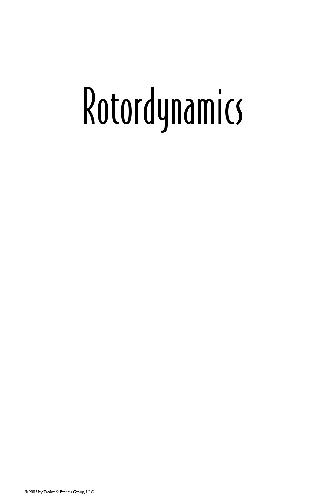

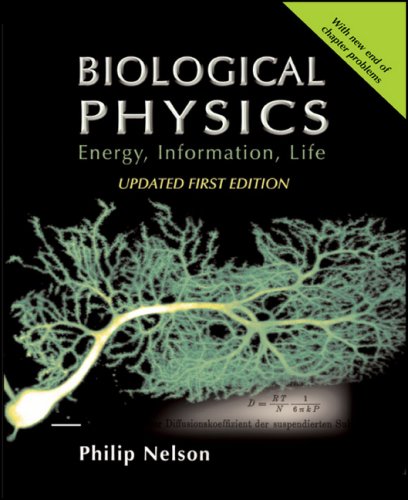
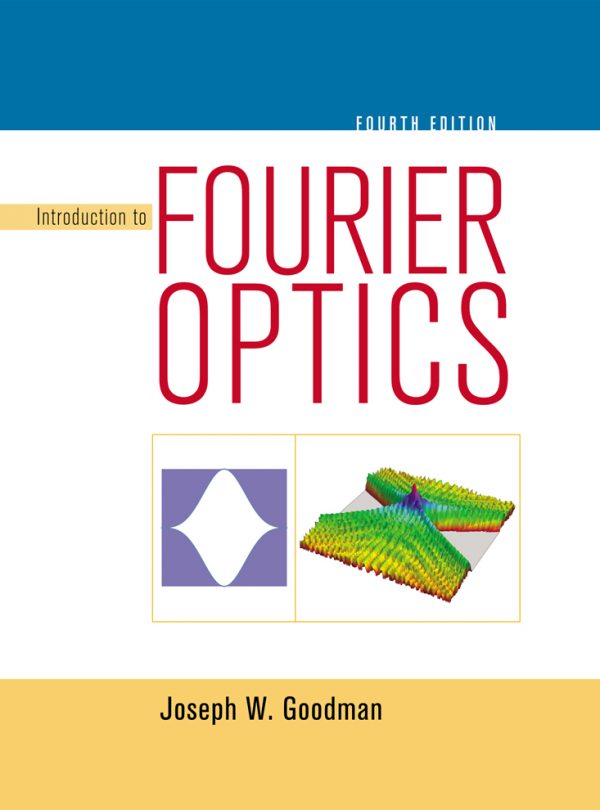
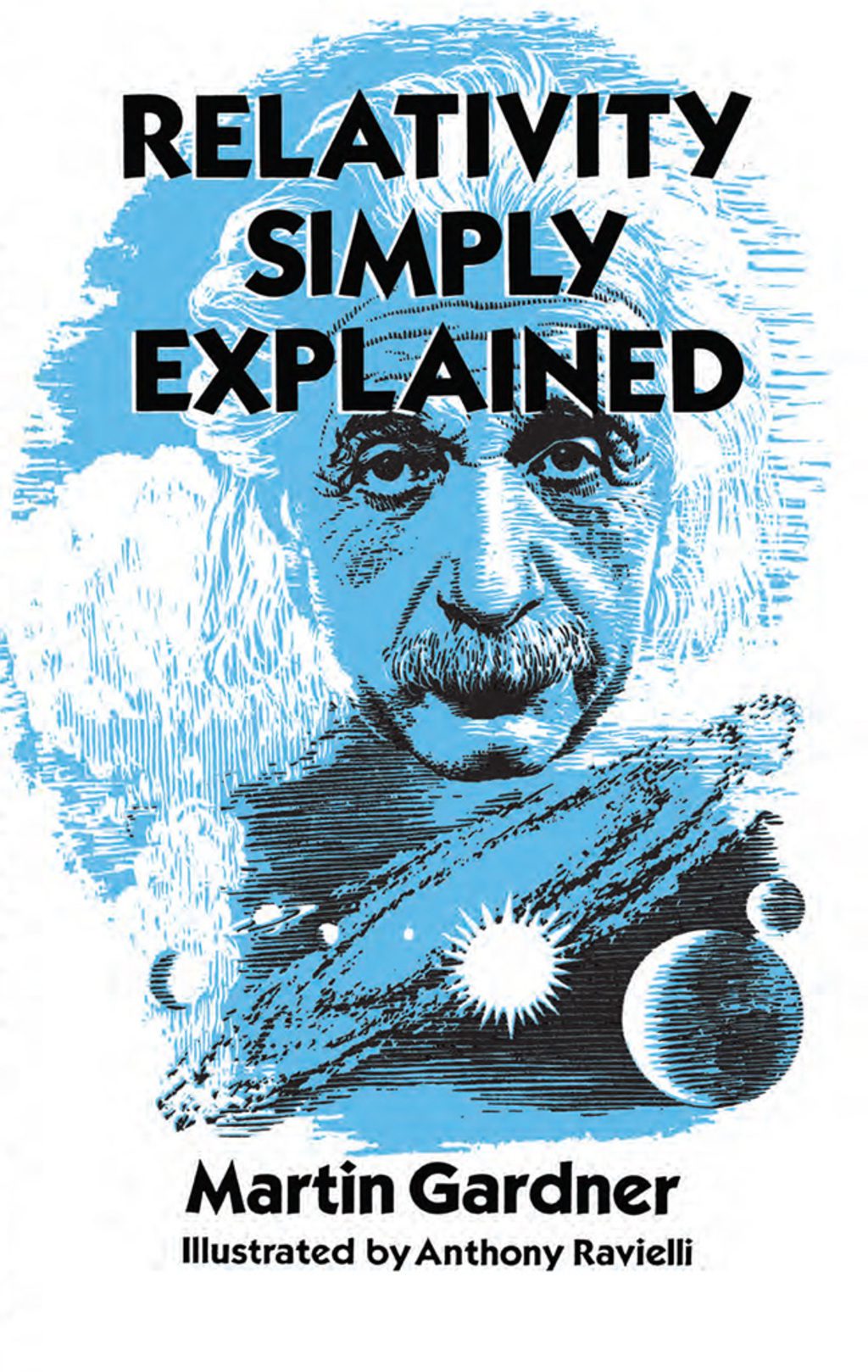
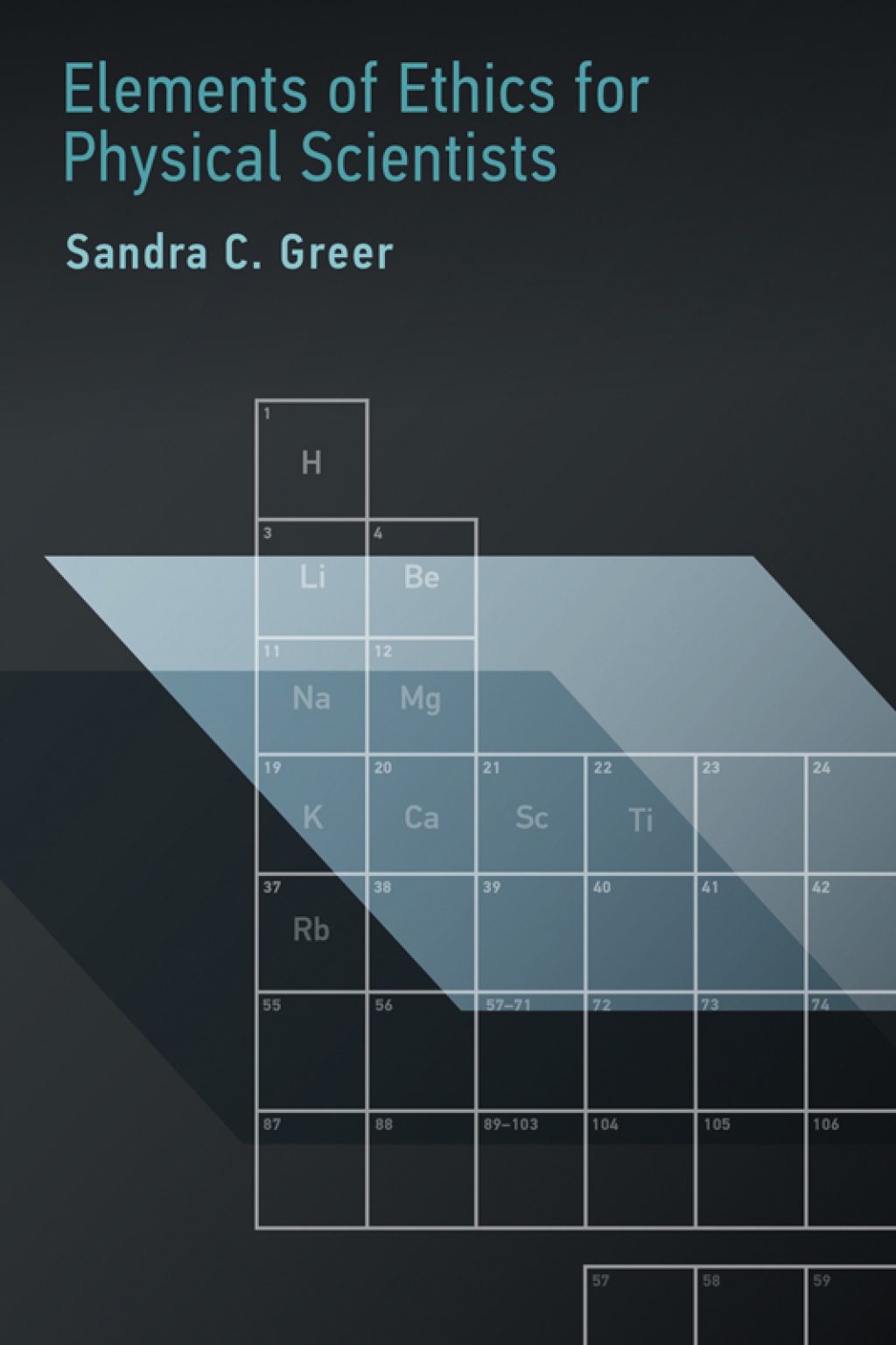
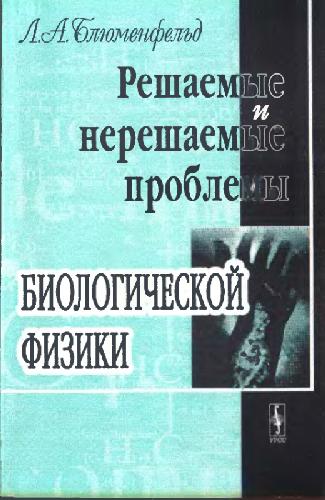
Reviews
There are no reviews yet.